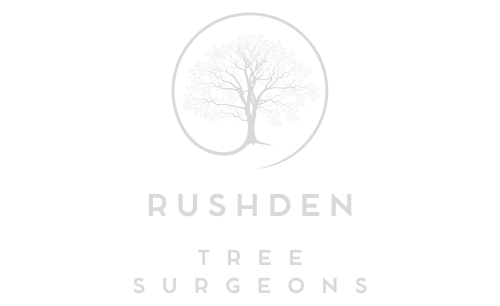How Tree Surgery Prevents Limb Breakage During Windstorms
In the unpredictable British climate, windstorms are becoming more frequent and intense — and trees are often among the first casualties. When high winds strike, weak or overgrown trees can suffer serious damage, with heavy limbs snapping and falling, posing risks to people, property, and nearby structures. At Rushden Tree Surgeons, we understand how proper tree surgery plays a vital role in preventing limb breakage, protecting both your trees and your surroundings across Rushden and Northamptonshire.
The Real Danger of Limb Breakage
During a storm, trees experience tremendous strain. Branches act like sails, catching the wind and transferring force through the trunk to the roots. When the canopy is dense, unbalanced, or full of deadwood, the pressure can become too great, causing branches to crack or shear away.
Limb breakage can result in:
- Property damage, including broken fences, roofs, and vehicles.
- Injury risks to residents and pedestrians.
- Irreversible harm to the tree, leading to decay or even total loss.
- Future instability, as an uneven canopy leaves the tree more vulnerable to the next storm.
Preventative tree surgery not only strengthens a tree’s physical structure but also improves its ability to withstand strong winds safely and naturally.
Understanding the Role of Tree Surgery
Tree surgery involves a combination of pruning, maintenance, and structural care techniques designed to enhance a tree’s health, stability, and longevity. At Rushden Tree Surgeons, our arborists use professional methods tailored to each species, site condition, and weather exposure to ensure that every tree can endure the elements without suffering avoidable damage.
Key techniques that reduce the likelihood of limb breakage include:
1. Crown Thinning
Crown thinning is one of the most effective methods for improving wind resistance. It involves selectively removing smaller branches within the canopy to reduce density. This allows wind to pass more easily through the tree rather than pushing against it, reducing strain on major limbs and the trunk.
2. Crown Reduction
For trees that have grown too large for their location, crown reduction is used to reduce overall height and spread without compromising the tree’s natural shape. By shortening heavier limbs, the canopy becomes more balanced, and the risk of snapping in strong winds is greatly reduced.
3. Deadwood Removal
Dead or decaying branches are particularly vulnerable to breakage, even in light winds. Removing this material not only enhances safety but also prevents disease from spreading to healthy areas of the tree. It’s a vital part of maintaining storm resilience.
4. Structural Pruning
Young and maturing trees benefit from structural pruning to encourage strong, well-spaced branch formation. Trees with evenly distributed limbs and central leaders are far less likely to suffer wind damage later in life.
5. Cabling and Bracing (for mature trees)
In some cases, mature trees may require added support. Cables or braces can be installed between large limbs to stabilise weak joints, preventing splitting or snapping during powerful gusts.
Why Windstorms Hit Trees So Hard
The combination of heavy rain and high winds can have a devastating effect on trees. Wet soil loosens the root anchorage, while strong winds apply lateral pressure on the canopy. When a tree is top-heavy or unevenly shaped, the force distribution becomes unbalanced, increasing the chance of limb or total failure.
In urban areas like Rushden, where trees are often exposed or surrounded by hard surfaces, wind turbulence can amplify this effect. Regular maintenance from professional tree surgeons helps to minimise this risk, ensuring trees remain stable, proportionate, and strong throughout the year.
Common Warning Signs Before Limb Failure
Identifying potential problems early is key to preventing storm-related damage. Property owners should look out for:
- Cracked or partially detached limbs.
- Overextended branches leaning heavily in one direction.
- Crossing or rubbing branches causing weak points.
- Areas of visible decay or fungal growth.
- Dense, heavy canopies that sway excessively in the wind.
If you notice any of these warning signs, it’s important to act before a storm exposes the tree’s weaknesses.
How Professional Tree Surgery Strengthens Long-Term Health
While preventing immediate hazards is crucial, professional tree surgery also promotes long-term stability and vitality. A well-pruned tree experiences better airflow, improved light penetration, and more balanced growth. This not only keeps it strong during windstorms but also supports healthy root development and disease resistance.
At Rushden Tree Surgeons, we assess each tree individually, determining the best approach based on its species, condition, and environment. Whether it’s a mature oak requiring crown thinning or a smaller ornamental tree needing deadwood removal, our goal is to maintain both safety and aesthetic balance.
The Value of Preventative Tree Care
Many property owners only think about tree maintenance after a storm has caused damage — but preventative care is far more effective and cost-efficient. Regular inspections and timely pruning greatly reduce the likelihood of branch failure, keeping your property and garden safe all year round.
Professional tree surgeons understand how to read a tree’s structure and predict weak points before they become hazards. By addressing these early, you not only protect your home but also preserve the beauty and ecological value of your trees.
Conclusion
Tree surgery is one of the most reliable defences against limb breakage during windstorms. Through professional pruning, thinning, and maintenance, trees are better equipped to withstand extreme weather without losing structure or stability.
Rushden Tree Surgeons provides expert tree care across Rushden and Northamptonshire, ensuring your trees remain safe, balanced, and resilient through every season. By investing in proper maintenance today, you can prevent dangerous storm damage tomorrow — and keep your landscape healthy, attractive, and secure for years to come.
Call us on: 01933 422 068
Click here to find out more about Rushden Tree Surgeons
Click here to complete our contact form and see how we can help with your tree needs.

